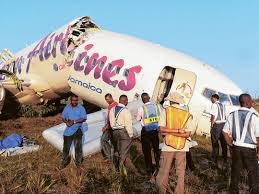Judgment on the jump seats

The duties of the director general of civil aviation (DGCA) of the TT Civil Aviation Authority (TTCAA) are prescribed by the Civil Aviation Act and the regulations made thereunder.
During my tenure as DGCA, I always strived to discharge those duties with the utmost impartiality, fairness and equity, with the safety of aviation being of paramount consideration as required by section 8 of the act.
The cabin on the Boeing 737-800 aircraft has approved seating for six flight attendants. There is one double-occupancy rear-facing seat at the forward left main door and another at each of the left- and right-hand rear doors. These seats are retractable when not in use and are equipped with shoulder harnesses for use by flight attendants whenever the fasten-seatbelt sign is on, such as during takeoffs, landings or turbulence.
The complement of flight attendants on the CAL Boeing 737-800 is based on one flight attendant for every 50 passengers. Therefore, with a seating configuration of 154 passengers, the regulatory minimum number of flight attendants is four. When the aircraft is operating with the legal minimum, there are two unused flight-attendant seats, normally referred to as "jump seats."
In early 2010, at CAL’s request, the TTCAA granted a one-time approval for a senior CAL executive to travel from New York to Port of Spain using a vacant flight-attendant seat, because all passenger seats were occupied by full-revenue passengers. Subsequently, CAL sought the TTCAA approval for senior managers to use unused flight-attendant seats when necessary. The TTCAA acquiesced and approved amendments to CAL’s operations manual to give legitimacy to this arrangement.
The TTCAA eventually approved the use of cabin jump seats by all CAL employees and their travel companions. As a condition, they had to be briefed on the use of emergency equipment, including the shoulder harness, which was quite different from the passenger seatbelts.
In March 2011, I travelled on a non-stop CAL flight to Toronto on my way to the ICAO headquarters in Montreal to attend a high-level global aviation meeting.
The flight was approximately six hours long and required a meal-and-a-half cabin service. When the aircraft was about 90 minutes inbound into Toronto, the purser, as the senior flight attendant, requested that I meet her in the aft galley.
I obliged and went to the aft galley, where I observed a couple standing next to the right exit door.I assumed that they were waiting to use the aircraft's rear toilets and drew to their attention that the toilets were vacant. The young man then informed me that they were companion travellers who were using the two rear vacant flight-attendant jump seats, as the flight was full.
The three cabin attendants assigned to the economy cabin were clearly flustered in preparing for the half-meal service, and, as these two jump-seat passengers were in their way, had to shift from the right side of the galley to the left side and vice versa to allow the flight attendants to do their cabin-service duties.
The purser turned to me and said, “Look what you cause.”
I did not respond and quietly went back to my seat. convinced that the use of the jump seats by non-flight crew was untenable. and pondered whether the TTCAA had become a victim of regulatory capture. as the vast majority of the TTCAA safety inspectorate. including the DGCA, were former employees of BWIA/CAL.
I was deeply troubled and had to find a judicious way to rescind the cabin jump-seat approval.
On July 29, 2011, as the chairman of the Caribbean Aviation Safety and Security Oversight System (CASSOS), the aviation organ of Caricom, I completed a week-long needs assessment for the government of Guyana to identify the requirements to establish an ICAO safety oversight system. I was due to return home the next morning on a CAL flight.
At approximately 1.33 am on the morning of July 30, 2011, a CAL Boeing 737-800 aircraft with 157 passengers and a crew of six exited the runway after landing at Cheddi Jagan International Airport (CJIA), coming to rest at the bottom of a 20-foot-high earth embankment.

The aircraft suffered damage beyond economic repair. It broke into two sections near the first-class bulkhead. Both engines were destroyed by the impact and foreign-object debris-ingestion.
There was no post-crash fire and no fatalities. One passenger suffered a broken leg which resulted in an amputation. Several other passengers and crew suffered minor injuries during the accident and evacuation.
An incoming call on my mobile phone at 1.40 am awakened me at my hotel. The call was from the Guyana DGCA.
I answered by asking, “How bad is it?” and he replied, “Very bad. I will pick you up in 15 minutes.”
I received a call from CAL's vice president of maintenance and engineering, informing me of the accident. I told him I was in Guyana and would be onsite soon.
On the way to CJIA, the Guyana DGCA inquired how I knew there had been an accident involving a CAL aircraft. I responded by saying that only a CAL accident would have you call me at 1.40 am.
Onsite at CJIA, I discovered that the flight had two companion travellers occupying the two rear unused cabin jump seats. Questions were raised about whether their unfastening of the shoulder harnesses impeded the egress of passengers during the emergency evacuation.
By 10 am that day, CAL’s CEO had a letter on his desk, signed by myself, revoking the use of vacant cabin jump seats by non-flight crew.
Regulatory capture occurs when regulatory agencies become dominated by the very industries they are charged with regulating, prompting regulators to advance the goals and interests of those industries.
While regulation is necessary, it must always be balanced against the potential for unintended consequences that can harm the people it is intended to protect.


Comments
"Judgment on the jump seats"